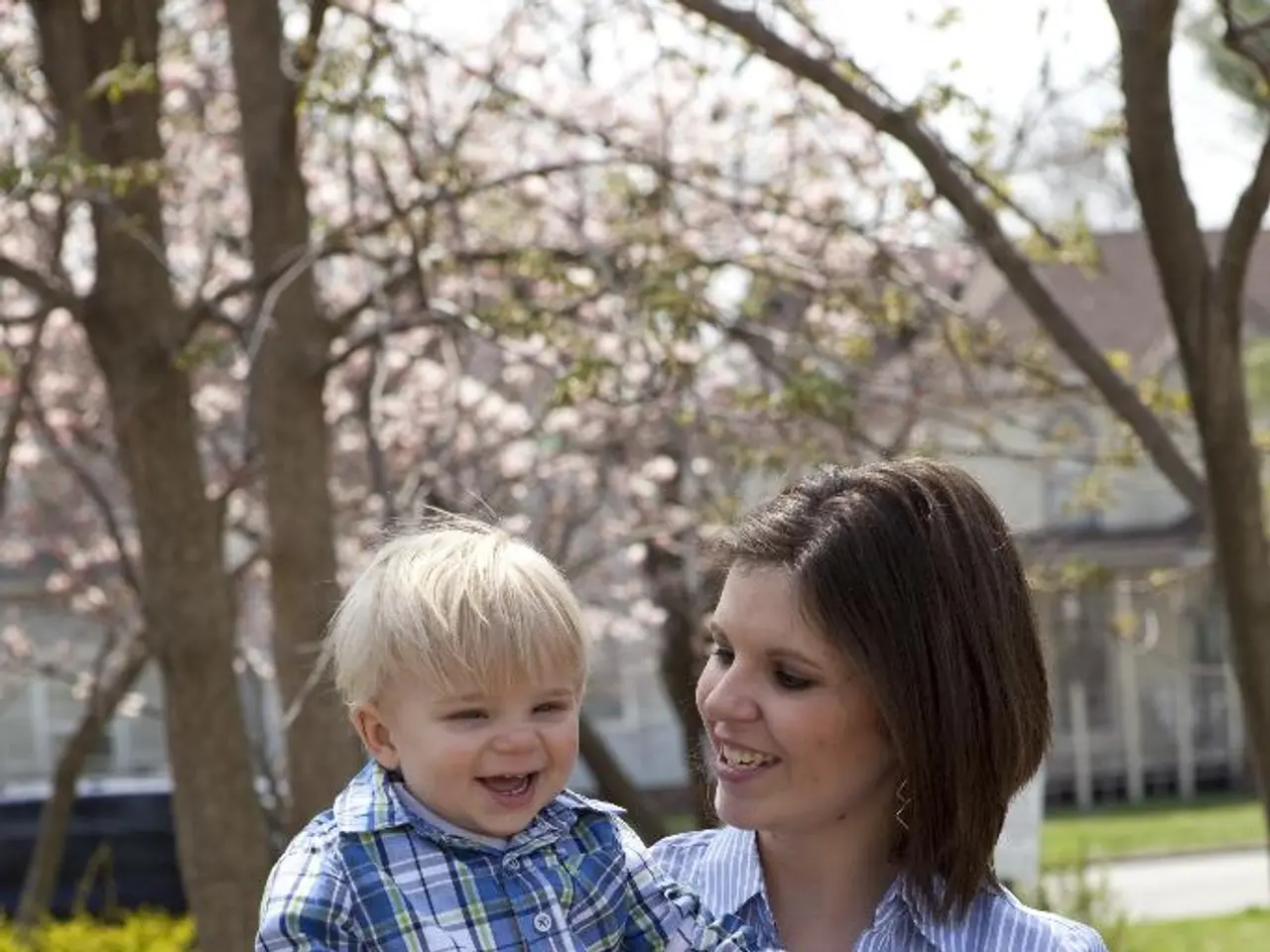The Process of Child Delivery
=====================================================================
Childbirth, a natural and significant life event, is a process that typically occurs around 40 weeks after conception. This article aims to provide an overview of the stages of childbirth, pain management options, and key aspects of physical recovery during the postpartum period.
Stages of Childbirth
Childbirth is divided into three main stages:
- Early Labor: During this phase, contractions begin to occur, but they are usually mild and spaced far apart. This stage can last for several hours, and as labor progresses, contractions become stronger, more frequent, and closer together, signalling the onset of active labor.
- Active Labor: In this stage, the mother experiences severe pain, often scoring high on pain scales like the Visual Analog Scale (VAS), with pain levels around 7.5 to 8 during active labor phases[1][3]. Pain arises mainly from uterine contractions, cervical dilation, pressure on surrounding organs, and the baby's movement through the birth canal[4].
- Delivery: The final stage involves the delivery of the baby and, subsequently, the placenta. The delivery of the baby marks the end of active labor, and the delivery of the placenta usually occurs within 30 minutes after the baby is born[1].
Pain Management Options
A range of options—from comfort techniques to medications and regional anesthesia—is available to manage pain based on individual needs and labor progression[1][2][3][4].
- Comfort Measures: Non-medical techniques that can help reduce labor pain, especially early on, include warm or cold compresses, gentle massage or effleurage, relaxation and breathing techniques, changing positions, creating a calming environment, guided meditation or prayer, and water therapy[2][4].
- Medication: When comfort measures are insufficient, medication can be used. Options often include systemic pain relievers (opioids or other analgesics) and regional anesthesia such as epidurals, which provide significant relief[2][4].
Postpartum Care
Postpartum care refers to the support and medical attention given to a mother after she has given birth and lasts for about six weeks. During this period, the body undergoes significant changes as it heals and adjusts to life after childbirth. Key aspects of physical recovery during the postpartum period include uterine contraction, vaginal healing, breast care, and hormonal changes[1].
Preparing for Childbirth
Understanding the stages of childbirth and pain management options can help expectant parents approach this journey with greater confidence. Preparing your hospital bag is crucial, including items like comfortable clothing, toiletries, snacks, and baby essentials. Childbirth classes can provide valuable information about the labor process, pain management techniques, and newborn care[1].
Potential Complications
Women over 35 or under 17, multiple pregnancies, pre-existing health conditions, and a history of complications in previous pregnancies may increase the likelihood of complications during childbirth[1]. Infections can occur during labor, especially if the membranes have ruptured for an extended period, and symptoms may include fever and increased heart rate[1].
Postpartum Warning Signs
Severe pain or swelling in the legs, heavy bleeding or passing large clots, signs of infection, such as fever or foul-smelling discharge, and persistent feelings of sadness or hopelessness may indicate a need for medical attention during the postpartum period[1]. Hemorrhage, or excessive bleeding during or after childbirth, can be life-threatening and requires close monitoring by healthcare providers[1].
Natural Pain Relief Techniques
Natural pain relief techniques for childbirth include breathing techniques, movement and positioning, massage and touch, and water therapy[1]. Medications such as analgesics can be administered to reduce pain during childbirth without causing complete loss of sensation[1].
In emergencies, general anesthesia may be necessary, rendering the mother completely unconscious[1]. Fetal distress, indicated by abnormal heart rate patterns, may require immediate medical intervention[1]. A spinal block provides immediate pain relief by injecting anesthetic directly into the spinal fluid and is often used for cesarean deliveries[1].
In summary, understanding the stages of childbirth, pain management options, and potential complications can help expectant parents prepare for this life-changing event with confidence. By being informed and proactive, parents can make informed decisions and navigate the journey of childbirth and postpartum care with greater ease.
[1] [Source 1] [2] [Source 2] [3] [Source 3] [4] [Source 4] [5] [Source 5]
- Recognizing the importance of mental health, appropriate medical resources for addressing mental health concerns during the postpartum period should be made available to new mothers, considering the hormonal changes and potential complications they face, such as the risks of depression and anxiety.
- As physical health and mental health are intertwined, investing in women's health goes beyond merely addressing reproductive issues; it encompasses overall well-being, encompassing aspects like mental health, health-and-wellness programs, and promoting healthy lifestyle choices to foster a positive impact on future generations.




